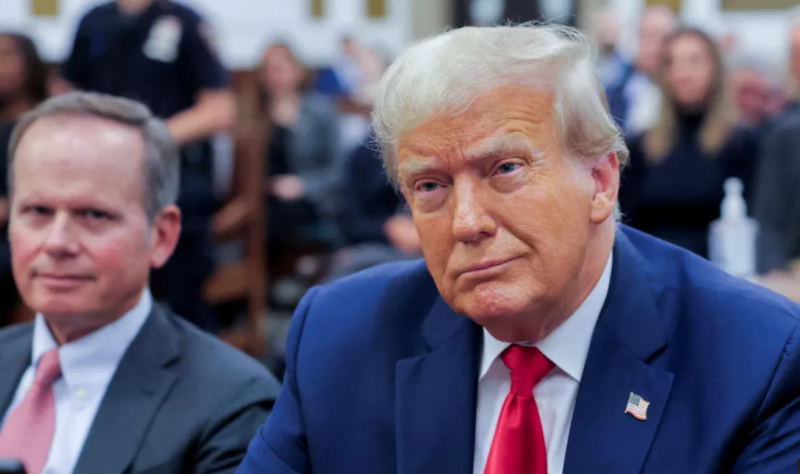Jordin Hall, left, as Newman and Josue Laboucane as Nick in The Art of War, now playing at the Stratford Festival.David Hou/Supplied
Title: The Art of War
Written by: Yvette Nolan
Performed by: Josue Laboucane, Jordin Hall, Jenna-Lee Hyde, Julie Lumsden, Rylan Wilkie
Directed by: Keith Barker
Company: Stratford Festival
Venue: Studio Theatre
City: Stratford, Ont.
Year: Runs to Sept. 27
Long before wars were live-streamed across social media, they were captured through brushes and paint. For most Canadians in the early 20th century, war was something that happened on the periphery of everyday life, on the radio and in newspapers; only through paintings and, later, photographs, did the gruesome, smelly, wholly visual realities of the battlefield make their way into this country’s collective conscience.
In The Art of War, now playing in a stark world premiere at the Stratford Festival, playwright Yvette Nolan digs into the lasting legacy of Canadian war art through the eyes of a young painter named Nick (a strong Josue Laboucane). Far from home at the height of the Second World War, Nick is tasked with capturing how the depths of combat look – and, more importantly, how they feel.
Through pigment alone, Nick must describe the smell of burnt flesh, the texture of blood, the howl of a starved stomach. On first glance, his is an enviable position within the Canadian military – no guns, no killing – but of course, it’s not that simple. The paintings are perpetual snapshots of fleeting moments: pain made permanent through the lens of Nick’s own experiences on the front line.
It’s a fascinating concept rife with dramatic potential. Indeed, most audiences will make connections between the wars in Nolan’s play and the humanitarian conflicts beamed daily into our hearts and algorithms today.
Stratford Festival unveils 2026 season, including a remount of Something Rotten!
What is the best show to see at this year’s Stratford Festival? Our theatre reporter answers your questions
But around the two-thirds mark, The Art of War stops showing and starts telling. Nick and a fellow battlefront archivist – a photographer named Dennis, played in tender layers by Rylan Wilkie – muse on artists’ roles in the war, and in culture more broadly. They explicitly state the thesis of the play, and ask questions about a war’s stake in building a national identity (and vice versa).
All at once, the work begins to sputter. What started as a steady-handed examination of the past morphs into a lecture.
That’s not helped by Keith Barker’s directorial vision, which renders the Studio Theatre oddly sparse. Teresa Przybylski’s set design emphasizes props rather than atmosphere, leaving Nick’s physical world confined to easels, brushes and canvases against a background of abstract projections. The production looks stylish enough, but it also feels like there was a missed opportunity to create a dialogue between Nick’s world and the paintings he eventually creates. Apart from a curious epilogue, the finished pieces never get the glory we’re repeatedly told they deserve.
There’s also the issue of Nick’s friends, adversaries and compatriots. Throughout The Art of War, Nick collects confidants in increasingly unlikely places: Is his best friend Newman (Jordin Hall) alive? It’s tough to say – in Nick’s world, phantoms abound. Eva, a showgirl (Julie Lumsden), is a similarly fleeting physical presence, and for much of the play, she exists in Nick’s memory solely as the music she makes.
Magda, a peasant woman (Jenna-Lee Hyde), emerges as the work’s most painful ache, a symbol of the human cost of geopolitical turmoil. Hyde’s performance breathes grit and nuance into Magda’s fury, and when The Art of War reaches its inevitable conclusion at the wrought-iron gates of hell, it’s hard not to cry for the hollow woman forever captured in Nick’s sketches.
Indeed, Nolan’s play is intermittently brilliant. There are flashes of writing excellence which suggest The Art of War might be just a draft from completion. But right now, there are structural quirks that confuse the work’s framing. Modern-day bookends at the top and tail of the show don’t add much to the central story, whose characters too often float in space, talking at – rather than to – each other. Lumsden’s parts in particular are underwritten and thin, despite the actor’s best attempts at adding depth.
With tweaks, The Art of War could be a thrilling addition to the Canadian theatrical canon, an overdue deep dive into the paintings that tell this country’s most harrowing stories of bravery, valour and sacrifice. In some scenes, The Art of War is at that level already – sure of itself and its message – but at present, too much valuable energy is being spent on pontificating about why art matters, instead of demonstrating why that’s the case. (That’s a theme familiar to the Stratford Festival’s new play development programs: Just recall how saliently Salesman in China made those points last year.)
Art is crucial to a healthy society. Some might argue the same is true of war. With just a touch more time and care, The Art of War could be the play that starts and ends that conversation for good. For now, it’s a just-okay sketch of a painter, his canvas and his palette of ghosts.













